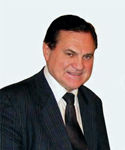| Biography | |
|---|---|
 Prof. Vladimir Tchernyi (Cherny) the Modern Science Institute, SAIBR, Russia |
|
| Title: Space Magnetism and Superconductivity: Diamagnetic Expulsion, Meissner Effect, Magnetic Pressure and Quantum Trapping Lead to the Origin and Stability of the Saturn Rings | |
| Abstract: Many questions still exist about the origin, dynamics, evolution and age of the Saturn rings. Galilei observe rings in 1610. J.C. Maxwell, 1859 proved the rings consist of an infinite number of separated particles. NASA had made four missions to Saturn: Pioneer, Voyager-1 and -2 and Cassini (2004-2017). But still the answer is needed to the question: “After the Cassini grand finale, is there a final consensus on the rings’ origin and age?” The existing theory of the rings emerging from fragments of an asteroid that came close to the planet. Cassini found no iron and rings consist of 93% of ice and 7% of carbon. To support theory of gravity defragmentation NASA decided to use Titan-sized icy satellite. This theory and others do not confirmed rings existence and particles property. Also rings could emerge from the particles of a protoplanetary cloud moving on chaotic orbits around Saturn. To shift orbits to the equator necessary introduce an additional force. Existence of Saturn magnetic field and temperature 70-100K bring us to idea of the particles diamagnetism and superconductivity. Solution of electromagnetic problem could be presented as two steps. First, all the chaotic orbits of icy particles are gradually moving to the magnetic equator plane due to diamagnetism and Meissner phenomenon after appearance of Saturn magnetic field. Final picture is similar to iron particles picture that form the same shape around a magnet on a laboratory table. Secondly, because of quantum locking each particle becomes to be locked within three-dimensional magnetic well due to Abrikosov quantum vortex phenomenon for superconductor. And each icy particle is in the stable position, preventing its own horizontal and vertical shift. This mechanism is valid and it works even if particles may have a small fraction of superconductor. For electromagnetic modeling the magnetization relationships for magnetically uniform spherical particles are introduced as a necessary component to account for dynamics of diamagnetic particles in the gravitational and magnetic fields. The magnetostatics problems of a solitary magnetized sphere and of a spherical particle among identical particles scattered in a disk-like structure are solved. The differential equations of the particles motion in superposition of gravitational force of attraction and diamagnetic repulsive force can account for the Saturn rings’ stability. The same electromagnetic modeling was made for superconducting particles and it was demonstrated that all particles should come to magnetic equator plane. In both case the main role is playing interaction of the icy particle with the magnetic field of Saturn. Contribution to the rings matter also may come from the frozen water particles generated from the Saturn sputniks geysers due to magnetic coupling between planet and satellites like it happening with satellite Enceladus, and that may even create a new ring. It follows that rings was created in the early time of the magnetic field of Saturn appearance. | |
| Biography: Vladimir Tchernyi (Cherny) has Ph.D. and Dr.Sci. in Radiophysics including Quantum Radiophysics and he is Professor. He is a member of Laser Academy of Sciences of the Russian Federation, International Informatization Academy and International Academy of Energy and Information Sciences. He used to work as a research scientist at the Moscow Kotel'nikov Institute of Radio Engineering and Electronics of Russian Academy of Sciences and at the Moscow General Physics Institute of the Russian Academy of Sciences. He was a head of the Department of Radiophysics of Volgograd State University in Russia and he was a research scientist at the University of California at Berkeley. Now he is a Director of the Modern Science Institute, SAIBR in Moscow which is doing research in the area of advance science and cutting edge technology. He is a member of the Board of the Russian Agency for the Development of the Information Society (RARIO). He was a member of Science-Expert Council at the Chairman of the Federation Council of the Russian Federation. He was lecturing in the USA and other countries of Europe, Africa and Asia. He presented talks at NASA Marshall Space Flight Center in Huntsville of Alabama, Astronomy Institute in Honolulu of Hawaii, USA National Bureau of Standards in Washington, University of California at Berkeley, George Washington University in Washington, University of California in San Diego, Astronomy Institute of University of Argentina at La Plata, University of Alexandria in Egypt, South Africa, etc.
| |
